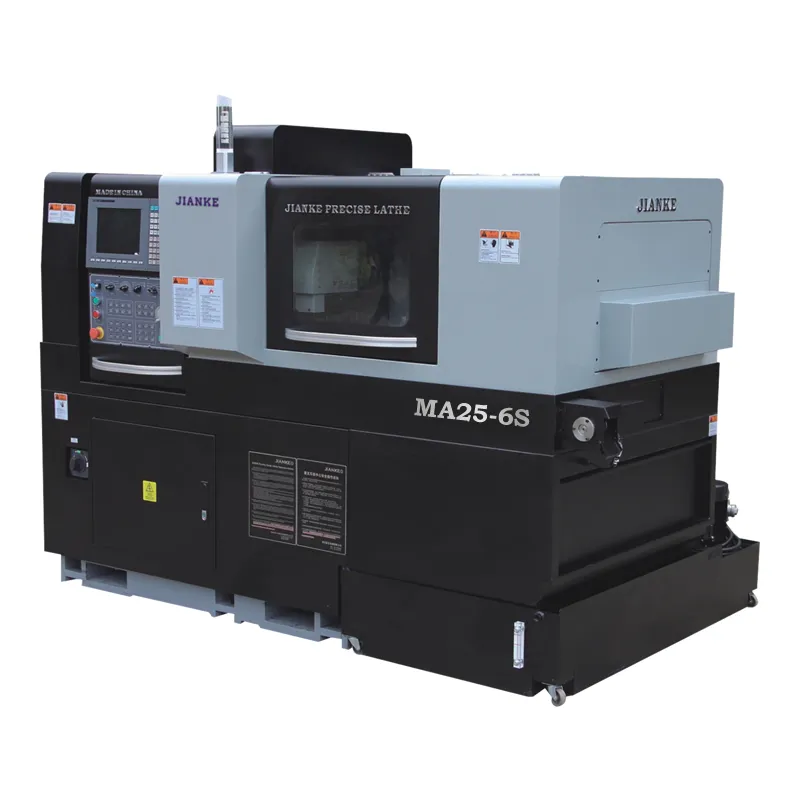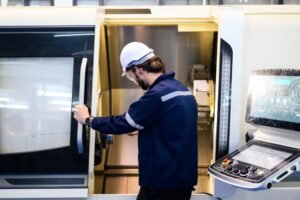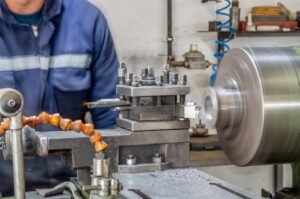In the world of modern manufacturing, CNC machine tools are the backbone of precision and efficiency. These machines enable the production of complex parts with high accuracy, but maintaining and improving these qualities is crucial for ensuring reliability and efficiency. This article delves into the strategies for enhancing the precision and accuracy of CNC machine tools, providing actionable insights for manufacturers.
Definition of Precision and Accuracy in CNC machine tools
Precision and accuracy are distinct yet interconnected concepts in CNC machine tools. Precision refers to the consistency or repeatability of measurements or operations, while accuracy refers to how close a measurement or operation is to the true value. Understanding these concepts is essential for optimizing CNC performance. For instance, precision ensures that parts are consistently made to the same specifications, while accuracy ensures that those specifications match the intended design.
Factors Affecting Precision and Accuracy
Several factors can influence the precision and accuracy of CNC machine tools:
- Mechanical Precision of the Machine: The inherent mechanical design and build quality of the machine itself significantly impact its precision and accuracy. High-quality machines with precise components can maintain consistent performance over time.
- Tool Selection and Maintenance: The choice and condition of cutting tools directly affect the quality of the finished product. Worn or inappropriate tools can lead to inconsistent results.
- Programming Techniques and Software Optimization: Efficient programming and optimized software settings can improve machining accuracy by ensuring smooth tool paths and optimal cutting parameters.
- Environmental Factors: Temperature fluctuations, vibrations, and other environmental conditions can also impact machine performance. For example, a workshop with stable temperature conditions can prevent thermal expansion or contraction of machine components.
Methods to Improve Precision
Improving the precision of CNC machine tools involves several key strategies:
Calibration and Maintenance:
- Regular calibration of both the machine and tools ensures that they operate within specified tolerances. This is akin to fine-tuning a musical instrument to ensure perfect harmony.
- Maintaining cleanliness and proper lubrication of moving parts is essential for smooth operation, much like keeping a car well-maintained for optimal performance.
Optimization of Programming and Software:
- Utilizing advanced CAD/CAM software can help in creating efficient tool paths and optimizing cutting parameters. This is similar to using GPS navigation to find the most efficient route.
- Regular software updates can also enhance performance by incorporating new features and improvements.
Tool Selection and Management:
- Choosing high-quality tools designed for specific tasks can improve precision. For example, using a specialized drill bit for precise hole-making ensures consistent results.
- Regular inspection and timely replacement of worn tools are critical to maintaining precision.

Methods to Improve Accuracy
Improving accuracy involves addressing factors that affect the machine’s ability to produce parts that meet specifications:
Temperature Control:
- Maintaining a stable workshop temperature helps prevent thermal expansion or contraction of machine components. This is crucial in environments where temperature fluctuations are common.
Material Selection and Management:
- Selecting materials with stable properties reduces variability in machining results. For instance, using materials with consistent hardness ensures predictable machining outcomes.
- Optimizing the machining process for specific materials can also enhance accuracy by adjusting parameters like speed and feed rate.
Real-Time Monitoring and Quality Control:
- Using sensors and probes for real-time monitoring allows for immediate correction of deviations. This proactive approach ensures that parts meet specifications before they are completed.
- Implementing quality control checks during production ensures that any issues are identified and addressed promptly.
CNC machine tools Case Studies and Practical Experience
Real-world examples of successful precision and accuracy improvements can provide valuable insights:
- Case Study: A manufacturing company improved its CNC machine accuracy by implementing regular calibration and upgrading to advanced software. This resulted in a significant reduction in defective parts and increased customer satisfaction.
- Practical Tips: Experienced operators often emphasize the importance of maintaining a clean and well-organized workshop environment. This not only improves safety but also reduces the risk of errors due to misplaced tools or materials.
Enhancing the precision and accuracy of CNC (Computer Numerical Control) machine tools requires a comprehensive approach that includes regular maintenance, optimized programming, and careful tool management. By understanding the factors that influence precision and accuracy and implementing effective strategies, manufacturers can significantly improve the quality and reliability of their CNC operations. Continuous improvement and optimization are key to maintaining a competitive edge in modern manufacturing.





